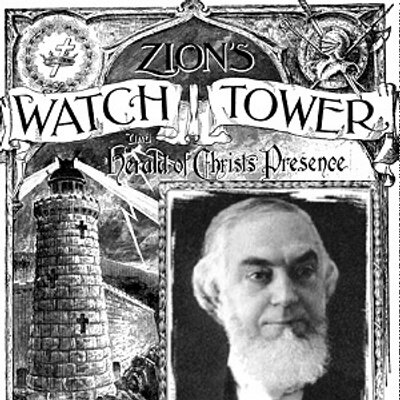- Applies to: I41EJ The default password of the camera is “admin”. If you forgot the new password you had created, or you cannot log in with the default password “admin”, please reset your camera to.
- Sign in to your account on 1Password.com, then choose a vault. Click Watchtower in the sidebar to create a Watchtower report. To view items that require your attention, click “View items”. To see if you have any vulnerable passwords or logins with two-factor authentication available, click “Check now” in the Vulnerable Passwords section.
This is a research tool for publications in various languages produced by Jehovah's Witnesses. For publication downloads, please visit jw.org. New languages available: Lele, Min Nan (Quanzhou) Today; Sunday, April 18. Two are better than one.
Watchtower can send notifications when containers are updated. Notifications are sent via hooks in the logging system, logrus.The types of notifications to send are set by passing a comma-separated list of values to the --notifications option (or corresponding environment variable WATCHTOWER_NOTIFICATIONS), which has the following valid values:
emailto send notifications via e-mailslackto send notifications through a Slack webhookmsteamsto send notifications via MSTeams webhookgotifyto send notifications via Gotifyshoutrrrto send notifications via containrrr/shoutrrr
There is currently a bug in Viper, which prevents comma-separated slices to be used when using the environment variable. A workaround is available where we instead put quotes around the environment variable value and replace the commas with spaces, as WATCHTOWER_NOTIFICATIONS='slack msteams'
If you're a docker-compose user, make sure to specify environment variables' values in your .yml file without double quotes (').
This prevents unexpected errors when watchtower starts.
Settings¶
--notifications-level(env.WATCHTOWER_NOTIFICATIONS_LEVEL): Controls the log level which is used for the notifications. If omitted, the default log level isinfo. Possible values are:panic,fatal,error,warn,info,debugortrace.- Watchtower will post a notification every time it is started. This behavior can be changed with an argument.
Available services¶
Email¶
To receive notifications by email, the following command-line options, or their corresponding environment variables, can be set:
--notification-email-from(env.WATCHTOWER_NOTIFICATION_EMAIL_FROM): The e-mail address from which notifications will be sent.--notification-email-to(env.WATCHTOWER_NOTIFICATION_EMAIL_TO): The e-mail address to which notifications will be sent.--notification-email-server(env.WATCHTOWER_NOTIFICATION_EMAIL_SERVER): The SMTP server to send e-mails through.--notification-email-server-tls-skip-verify(env.WATCHTOWER_NOTIFICATION_EMAIL_SERVER_TLS_SKIP_VERIFY): Do not verify the TLS certificate of the mail server. This should be used only for testing.--notification-email-server-port(env.WATCHTOWER_NOTIFICATION_EMAIL_SERVER_PORT): The port used to connect to the SMTP server to send e-mails through. Defaults to25.--notification-email-server-user(env.WATCHTOWER_NOTIFICATION_EMAIL_SERVER_USER): The username to authenticate with the SMTP server with.--notification-email-server-password(env.WATCHTOWER_NOTIFICATION_EMAIL_SERVER_PASSWORD): The password to authenticate with the SMTP server with. Can also reference a file, in which case the contents of the file are used.--notification-email-delay(env.WATCHTOWER_NOTIFICATION_EMAIL_DELAY): Delay before sending notifications expressed in seconds.--notification-email-subjecttag(env.WATCHTOWER_NOTIFICATION_EMAIL_SUBJECTTAG): Prefix to include in the subject tag. Useful when running multiple watchtowers.
Example:
The previous example assumes, that you already have an SMTP server up and running you can connect to. If you don't or you want to bring up watchtower with your own simple SMTP relay the following docker-compose.yml might be a good start for you.
The following example assumes, that your domain is called your-domain.com and that you are going to use a certificate valid for smtp.your-domain.com. This hostname has to be used as WATCHTOWER_NOTIFICATION_EMAIL_SERVER otherwise the TLS connection is going to fail with Failed to send notification email or connect: connection refused. We also have to add a network for this setup in order to add an alias to it. If you also want to enable DKIM or other features on the SMTP server, you will find more information at freinet/postfix-relay.
Example including an SMTP relay:
Slack¶
If watchtower is monitoring the same Docker daemon under which the watchtower container itself is running (i.e. if you volume-mounted /var/run/docker.sock into the watchtower container) then it has the ability to update itself. If a new version of the containrrr/watchtower image is pushed to the Docker Hub, your watchtower will pull down the new image and restart itself automatically.
To receive notifications in Slack, add slack to the --notifications option or the WATCHTOWER_NOTIFICATIONS environment variable.
Additionally, you should set the Slack webhook URL using the --notification-slack-hook-url option or the WATCHTOWER_NOTIFICATION_SLACK_HOOK_URL environment variable. This option can also reference a file, in which case the contents of the file are used.
By default, watchtower will send messages under the name watchtower, you can customize this string through the --notification-slack-identifier option or the WATCHTOWER_NOTIFICATION_SLACK_IDENTIFIER environment variable.
Other, optional, variables include:
--notification-slack-channel(env.WATCHTOWER_NOTIFICATION_SLACK_CHANNEL): A string which overrides the webhook's default channel. Example: #my-custom-channel.--notification-slack-icon-emoji(env.WATCHTOWER_NOTIFICATION_SLACK_ICON_EMOJI): An emoji code string to use in place of the default icon.--notification-slack-icon-url(env.WATCHTOWER_NOTIFICATION_SLACK_ICON_URL): An icon image URL string to use in place of the default icon.
Example:
Microsoft Teams¶
To receive notifications in MSTeams channel, add msteams to the --notifications option or the WATCHTOWER_NOTIFICATIONS environment variable.
Additionally, you should set the MSTeams webhook URL using the --notification-msteams-hook option or the WATCHTOWER_NOTIFICATION_MSTEAMS_HOOK_URL environment variable. This option can also reference a file, in which case the contents of the file are used.
MSTeams notifier could send keys/values filled by log.WithField or log.WithFields as MSTeams message facts. To enable this feature add --notification-msteams-data flag or set WATCHTOWER_NOTIFICATION_MSTEAMS_USE_LOG_DATA=true environment variable.
Example:
Gotify¶
To push a notification to your Gotify instance, register a Gotify app and specify the Gotify URL and app token:
-e WATCHTOWER_NOTIFICATION_GOTIFY_TOKEN or --notification-gotify-token can also reference a file, in which case the contents of the file are used.
If you want to disable TLS verification for the Gotify instance, you can use either -e WATCHTOWER_NOTIFICATION_GOTIFY_TLS_SKIP_VERIFY=true or --notification-gotify-tls-skip-verify.
To send notifications via shoutrrr, the following command-line options, or their corresponding environment variables, can be set:
--notification-url(env.WATCHTOWER_NOTIFICATION_URL): The shoutrrr service URL to be used.

Go to containrrr.github.io/shoutrrr/services/overview to learn more about the different service URLs you can use.You can define multiple services by space separating the URLs. (See example below)
You can customize the message posted by setting a template.
Watchtower Password Manager
--notification-template(env.WATCHTOWER_NOTIFICATION_TEMPLATE): The template used for the message.
The template is a Go template and the you format a list of log entries.
Watchtower 1password
The default value if not set is {{range .}}{{.Message}}{{println}}{{end}}. The example below uses a template that also outputs timestamp and log level.
Example:
